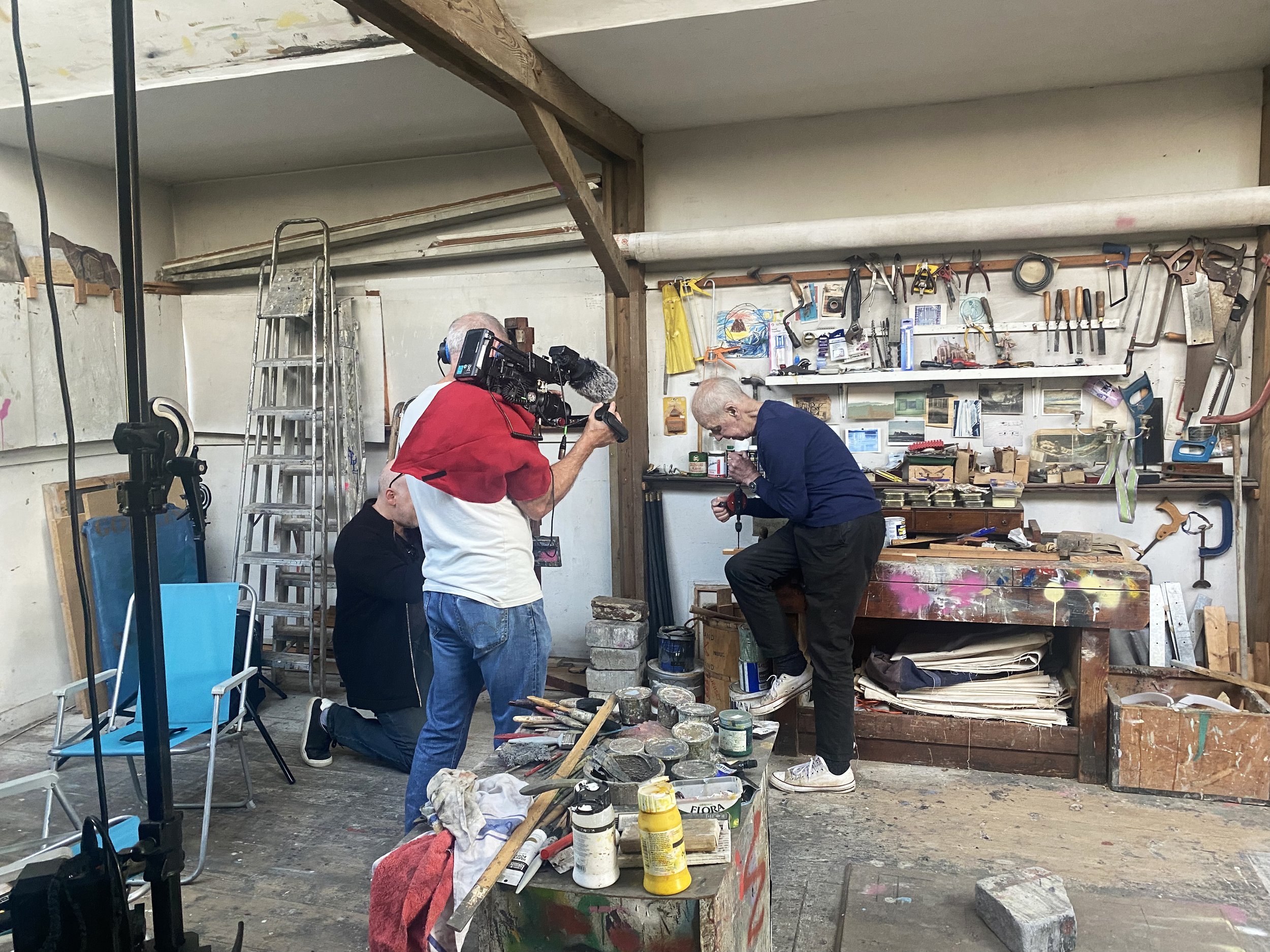David Hepher
DAVID HEPHER
For over six-decades, British artist David Hepher has explored the ubiquitous tower-blocks, high-rises, and public housing complexes of south London in layered paintings, often immense in scale, that embrace both abstraction and exacting, almost hallucinatory, precision. Born in Surrey in 1935, Hepher’s interest in the urban landscape dates to his undergraduate studies at Camberwell School and later, the Slade School of Art, from which he emerged a realist painter. Stylistically tied to the Euston Road school, his early works were dark and gritty cityscapes. His fidelity to the landscape – in this case the industrialized housing estates that came to dominate post-war Britain – has been a lifelong pursuit.
The impact of American painting on the U.K., first Abstract Expressionism, then Pop Art, was considerable. The Pop sensibility – its ordinary subject matter, sober methodology, and attraction to mass culture – made it an effective muse for a generation of British artists that included Hepher, David Hockney, and Peter Blake. Buoyed by the relative freedom of Pop, Hepher emerged on to the British art scene with a suite of colossal paintings based on the suburban house fronts of south London. The semi-detached row houses featured Edwardian terraces in muted colors, paneled doors, and bay windows. Meticulously painted, the canvasses were enormous – nearly life-size – some as long as forty feet. His initial foray into the interpretation of the architectural façade would be fruitful, evolving into the scrupulous geometry, textural physicality, and hypnotic realism of his later work.
Hepher has always painted what is in his environment, eschewing notions that a critique on the social mechanism is embodied in his work. The gridded austerity of the high-rises that dominate his neighborhood lent a reductive geometry to his paintings, offering both staggering clarity and a new degree of simplicity. Though the paintings were mostly devoid of people, a hint of life, even warmth, was evident. Eventually architectural elements were introduced into the canvas in a hybrid collage method using cement, fabric, and wood. The canvas, now evoking bas relief, held the formal structure in place while amplifying its veracity. Later, Hepher added graffiti tags, embedding the imagery into the gray concrete and structured depth of his canvases. The painterly swirls provide both tonal variants and a marked velocity to the paintings, creating an effect that moves from the surreal to the super-real.
David Hepher’s art is featured in collections including the Tate, Victoria and Albert Museum, Arts Council England, and the Contemporary Arts Society, the Arts Council Collection, British Arts Council, Bradford Museum and Art Gallery, Museum Boymans-van Beuningen, the Museum of London, Southbank Centre Brighton, and Hove Museums and Art Galleries British Council Collection, London Cartwright Hall Art Gallery, London Fitzwilliam Museum, Cambridge Government Art Collection, Middlesbrough Institute of Modern Art (formerly the Cleveland Gallery), London Museums Sheffield, Sheffield Tate Collection, London, UCL Art Museum, London, Wolverhampton Art Gallery, Wolverhampton.
He has had solo exhibitions at London’s Serpentine Gallery, Whitechapel Gallery, and Hayward Gallery, and was included in Unpopular Culture: Grayson Perry Selects from the Arts Council Collection, Hayward, Touring, British Council Collection: My Yard, Whitechapel Gallery, Out of Britain, National Museum in Riyadh, Saudi Arabia, and Reality: Modern & Contemporary British Painting at the Sainsbury Centre for Visual Arts, Cambridge, and the Walker Art Gallery, Liverpool, UK.
An extensive monograph written by art critic, author, and documentary filmmaker Ben Lewis, David Hepher: Grain of Concrete, Utopia and Entropy was published by Flowers Gallery in 2017.
He has been represented by Flowers Gallery, London, since 1972.
“I came to London as a student in the middle ‘50s, in the so-called School of London, and the dominant artists were Francis Bacon, Lucian Freud, Frank Auerbach, and Leon Kossoff. It fitted the post-war atmosphere, which was quite depressing and concerned with a rather gritty form of realism. That stayed with me, but at the same time my peers over at Royal College, which included David Hockney, Patrick Caulfield, Ron Kitaj (aka R.B. Kitaj) from America, were inventing their own form of Pop Art. I was inclined toward the more serious, suffering route. But nevertheless, what was going on with American Pop Art – a completely different story - really kind of knocked me over.”
“I’m sometimes questioned whether I’m interested in the people who live in the buildings, and indeed, often criticized for maybe taking advantage of people who live in social housing in disadvantaged situations. The honest answer is, I don’t really care. I’m simply interested, really, in the landscape. I think to go beyond that would be actually very difficult. I don’t expect Constable to be interested in farming, although he painted the fields and the trees.”
“I wanted to do my own version of the fresh audacity that Pop had, and the sense of painting something straight, without any kind of painterly handwriting, is what led me to the housefronts.”



























